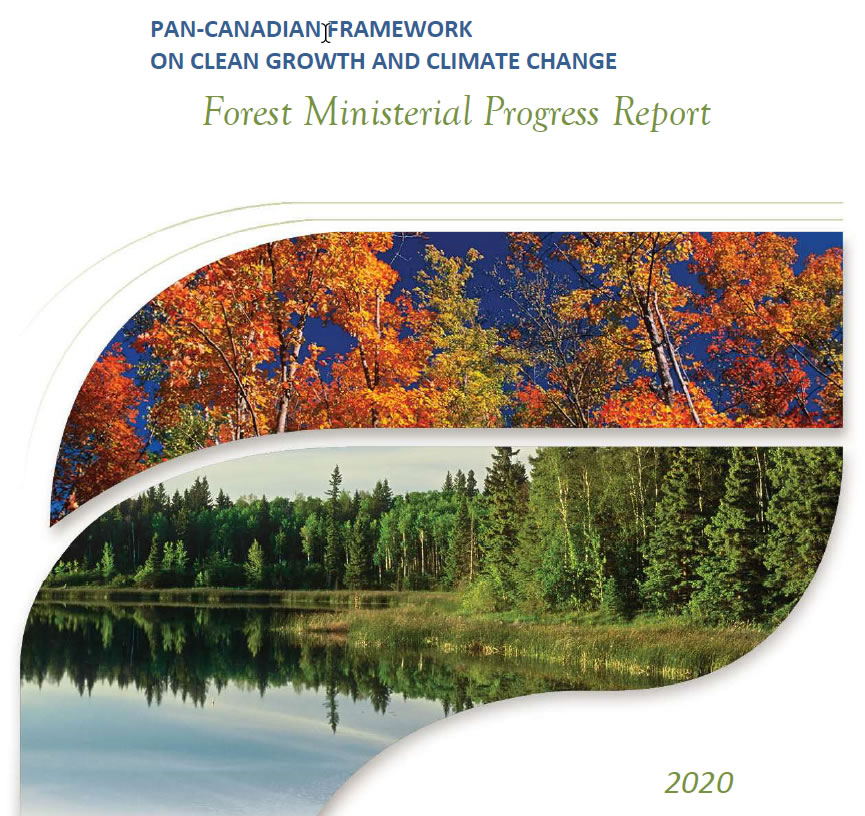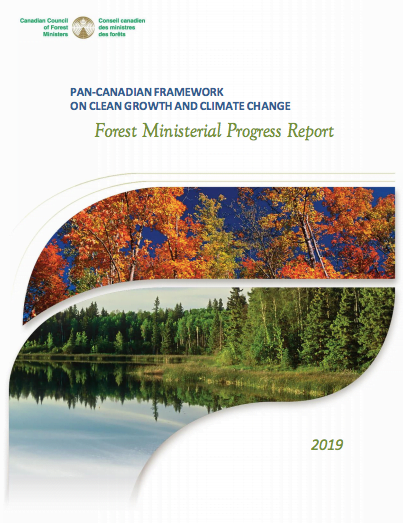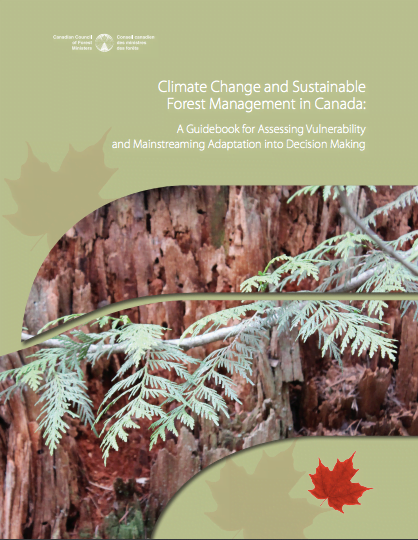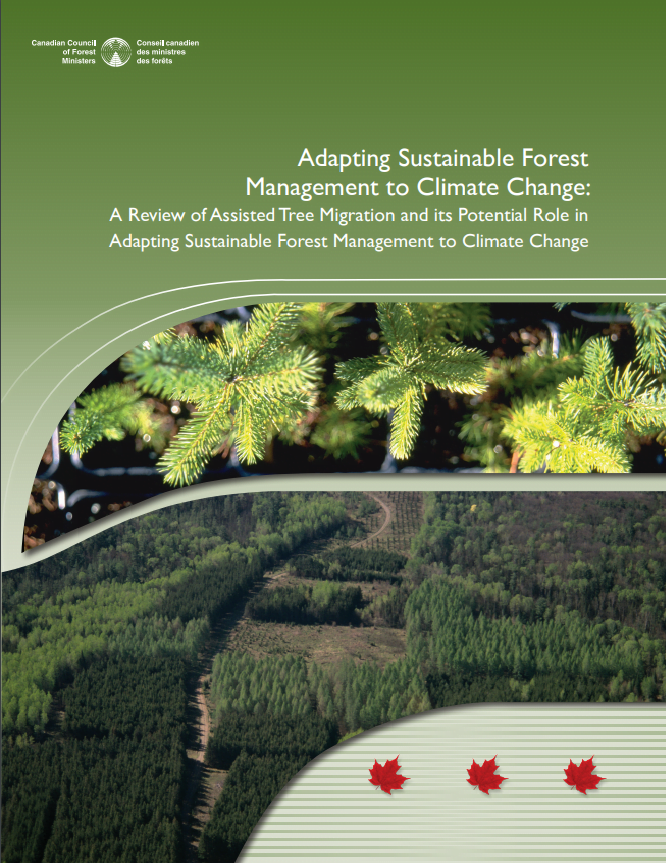Earth’s second-largest natural storehouses of carbon
Second only to the world’s oceans, forests contain more carbon than is presently found in the atmosphere. Carbon moves into and through forest ecosystems, playing important roles in ecological processes and management of carbon emissions and removals.
Forests are a vital part of the carbon cycle, both storing and releasing this essential element in a dynamic process of growth, decay, disturbance, and renewal. At a global scale, forests help maintain Earth’s carbon balance and thus help us lessen the impacts of climate change.
Over the past four decades, forests have moderated climate change by absorbing about one-quarter of the carbon emitted by human activities such as the burning of fossil fuels and deforestation that converts forests to other land uses. Carbon uptake by forests reduces the rate at which carbon accumulates in the atmosphere and thus reduces the rate at which climate change occurs.
Essentially, to reduce climate change, we need to do two things: emit less carbon (and other greenhouse gases) and remove excess carbon from the atmosphere. How well we can manage forests to remove some of the carbon now being emitted by human activities will affect the future rate of carbon increase in the atmosphere.
Defining carbon balance
Earth’s carbon balance is calculated as the carbon emissions from human activities minus the carbon uptake by oceans and land systems. Since the industrial use of fossil fuels began, the net carbon balance has resulted in increases in the atmospheric CO2 concentration from 280 parts per million to over 390 parts per million.
As a major forest nation, Canada is working to understand how changing climate will affect the global carbon balance, the health of the country’s ecosystems and the flow of goods and services provided to Canadian society.
Canada also has international reporting obligations. Under the United Nations Framework Convention on Climate Change, Canada must monitor and report greenhouse gas (GHG) emissions and changes in the carbon stock in its managed forests. This means tracking changes that result from forest growth, decomposition, disturbances (wildfire and insects), harvesting and land-use changes. Land-use changes include afforestation (that is, the creation of new forests where none exist) and deforestation (that is, the conversion of forests to non-forest land uses such as agriculture).
Forests as carbon sources and carbon sinks
- A forest is considered to be a carbon source if it releases more carbon than it absorbs. Forest carbon is released when trees burn or when they decay after death due to old age or wildfire, insect attack or other disturbance. Carbon as CO2 and methane (CH4) naturally occur in the atmosphere as regulators of climate. It is the increase of these gasses in the atmosphere that is causing climate change.
- A forest is considered to be a carbon sink if it absorbs more carbon from the atmosphere than it releases. Carbon is absorbed from the atmosphere through photosynthesis. It then becomes deposited in forest biomass such as trunks, branches, roots and leaves, in dead organic matter as litter and dead wood, and in soils. This process of carbon absorption and deposition is known as carbon sequestration.
The net balance of all these carbon exchanges determines whether a forest is a carbon source or sink. Yet, the carbon source/sink balance is as dynamic as it is complex.
For the past century, Canada’s managed forests have been a significant carbon sink. In recent decades, however, the situation has reversed in some years; Canada’s forests have become carbon sources, releasing more carbon into the atmosphere than they are accumulating.
Several factors have contributed to this shift including the annual total area burned by wildland fires has increased substantially and unprecedented insect outbreaks have occurred.
The combination of these events and activities has resulted in Canada’s managed forest acting as a net carbon source, especially when large areas are burned.
Protecting, restoring, managing
Any action that conserves, restores, or improves the use or management of forests and other high-carbon ecosystems while increasing carbon storage and/or avoiding greenhouse gas emissions, can be considered a “natural” climate solution.
When we talk about natural climate solutions and forests, we are focused on three main things:
- Protecting the critical places we need for our climate;
- Restoring and expanding the footprint of natural ecosystems, so they can do what they do best; and
- Improving how we manage our working lands.
Further discussion can be found here.
Forest industry carbon emissions
Scientists agree that there is a strong link between climate change and activities that emit carbon dioxide, methane, nitrous oxide and other GHGs, such as burning fossil fuels. By monitoring the forest industry’s GHG emissions, we can assess the improvement of its emissions record over time.
Canada measures its national emission levels annually for all sectors and assesses its emissions against targets for GHG reductions. The forest industry has achieved both reductions in energy use through greater efficiencies and reductions in GHG emissions by reducing energy use and changing the fuel mix.

Total greenhouse gas (GHG) emissions from fossil fuel use in the Canadian forest industry have decreased over the last 10 years with energy use remaining relatively stable in recent years.
The forest industry’s ability to generate its own electricity, largely from bioenergy, has reduced its reliance on fossil fuels.
The bioenergy share of the total energy use in the industry has been stable, accounting for 54 per cent of energy use in the forest industry in 2016, slightly down from the 56 per cent average observed over the 2005-2015 period. Between 2006 and 2016, the forest industry reduced energy use by 25 per cent and total fossil GHG emissions (direct emissions plus indirect emissions from purchased electricity) by 38 per cent.
Carbon emissions and removals
In 2017, total net emissions of carbon dioxide equivalent (CO2e) from Canada’s managed forests (forest lands managed for timber production) were about 217 million tonnes (Mt).
Total net emissions are calculated by adding emissions/removals caused by human activities in Canada’s managed forests to emissions/removals caused by large-scale natural disturbances in Canada’s managed forests.
Human activities in Canada’s managed forests accounted for removing about 20 Mt CO2e in 2017, while large-scale natural disturbances accounted for emissions of about 237 Mt CO2e, resulting in net emissions of 217 Mt CO2e.
These figures include carbon monoxide emissions as well as emissions in 2017 from harvested wood products manufactured from wood harvested in Canada since 1900. Both types of emissions are reported as separate categories in Environment and Climate Change Canada’s National Inventory Report 1990–2017.
Forest lands managed for timber production and the emissions from wood products harvested from these lands continue to be an ongoing sink of carbon (20 Mt CO2e in 2017).

CCFM’s Climate Change Task Force (CCTF)
The work of the CCFM’s Climate Change Task Force (CCTF), formed in 2008, is intended to catalyze and accelerate the transformation of sustainable forest management policies, planning, and practices in accordance with the needs of various forest management organizations across Canada.
Work under the CCTF was initiated with a two-phase program followed by a reconvening of the CCTF to commence a third phase of work to address key climate change adaptation issues identified from the program.
Phase 1: Culminated in 2010 with the publication of two reports
- Vulnerability of Canada’s Tree Species to Climate Change and Management Options for Adaptation
- A Framework for Forest Management Offset Protocols
These reports can be found in the resources section.
Phase 2: Completed March 2015, addressed adaptation at the forest ecosystem and forest sector levels, responding directly to a key CCFM objective that “consideration of climate change and future climatic variability is needed in all aspects of sustainable forest management” (as described in A Vision for Canada’s Forests: 2008 and Beyond).
The primary goal was to provide members of the forest sector with state-of-the-art tools and new knowledge that will allow them to assess the vulnerabilities, risks, and opportunities associated with climate change.
The CCFM vulnerability assessment tools and techniques are described in a series of nine inter-related reports specifically designed for forest management decision-makers, which can be found in the resources section. A summary report of the CCFM Climate Change Adaptation Series is also available.
Phase 3: Initiated in 2015, focused on furthering inter-jurisdictional conversations on integrating climate change into national sustainable forest management criteria and indicators (C&I), enhancing integration of climate change considerations into CCFM Fire and Pest working group outputs, and continuing forestry adaptation networking through support of the Forestry Adaptation Community of Practice (FACoP) site.




